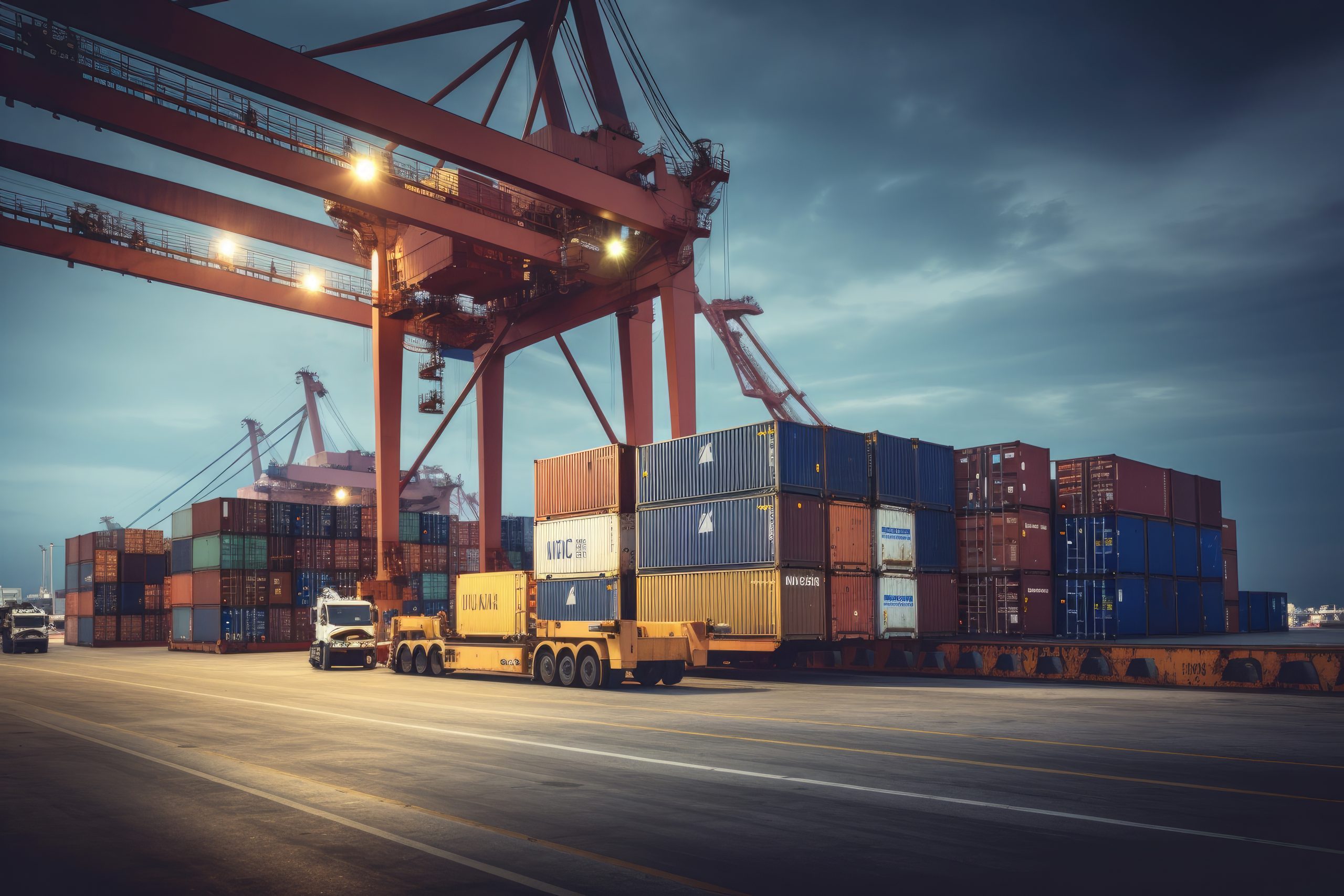The logistics industry, once considered slow to adopt new technologies, is now embracing AI to transform various facets of its operations, including competitor intelligence. AI’s capacity to analyze and process vast data sets is helping logistics companies gain a deeper understanding of their competitors’ strategies, pricing models, and market positioning. As AI becomes increasingly integrated into logistics operations, businesses are using these advanced technologies to refine their competitive strategies, streamline their services, and ultimately gain a sustainable edge in a highly competitive market.
This article will delve into how AI is revolutionizing competitor intelligence in the logistics industry by helping companies collect competitor data, monitor, analyze, and benchmark them and respond proactively by making timely and informed business decisions.
How AI helps logistics companies in collecting and analyzing vast amounts of data
AI is increasingly bolstering the ability of logistics organizations to gather and analyze large amounts of structured and unstructured data from disparate sources. This information can include competitor activities, financial data, customer feedback, and market trends, enabling businesses to develop a comprehensive view of the competitive landscape. This shift from traditional methods to AI-driven intelligence means that logistics companies can now analyze vast amounts of data that were previously difficult and time-consuming to interpret. The following AI-powered techniques are widely used by logistics companies to analyze data:
Category | AI Use Case | Details | Examples |
| Unstructured Data Analysis | Unstructured Multimedia | AI-powered image recognition and video analysis provide insights into competitor warehousing and operational processes from visual data. For example, it can analyze logistics facility layouts or assess truck utilization from publicly available images and videos. | Amazon employs AI-powered image and video analysis to gain insights from warehouse layouts, analyze competitor inventory placements, and optimize internal warehouse operations. This allows Amazon to make better decisions regarding storage space allocation, ultimately improving operational efficiency and lowering costs. |
| Unstructured Text Content | NLP tools like sentiment analysis, entity recognition, and topic modeling analyze vast amounts of unstructured data such as social media posts, customer reviews, newsletters, and other PDF documents such as whitepapers, annual reports, and case studies. | Coupa uses AI to monitor competitor-related data, such as market sentiment from news articles, social media posts, and research reports. This data is leveraged for entity recognition and topic modeling, providing strategic insights into competitor moves and industry sentiment changes. | |
| Structured Data Analysis | Sentiment Analysis for Market Insights | AI tools analyze structured data to assess public perception of competitors. By understanding customer sentiment, logistics companies can identify opportunities to differentiate services. | Echo Global Logistics uses AI-based sentiment analysis to understand how customers perceive their competitors. This helps Echo Global Logistics refine its service offerings and adjust its customer engagement strategies based on competitor strengths and weaknesses. |
| Descriptive Analytics | AI-powered descriptive analytics tools summarize historical data and provide a snapshot of what has happened. Used to assess competitors’ KPIs like delivery times, order accuracy, and cost efficiency. | DHL utilizes AI-powered descriptive analytics to assess competitor performance by analyzing key KPIs such as delivery times, order accuracy, and operational costs. DHL’s platform provides a snapshot of how competitor performance trends over time, aiding in strategy refinement. | |
| Predictive Analytics | Predictive analytics enables logistics companies to forecast competitor behaviors and trends by analyzing historical data and external factors. | Maersk employs predictive analytics to forecast competitor behaviors by evaluating shipping trends, economic factors, and geopolitical events. This allows Maersk to anticipate competitor actions and proactively adjust its own strategies. |
How AI helps logistics companies in real-time monitoring of competitors’ activities
AI systems can continuously monitor competitor websites, pricing models, and customer feedback. This allows logistics firms to react to changes swiftly—be it a new service offering or a sudden price drop. For instance, logistics companies can set up AI-powered systems to send real-time alerts when a competitor launches a new product, introduces a price reduction, or secures a major contract. This immediacy allows businesses to stay ahead by adjusting their strategies in near real-time.
AI helps logistics companies with their competitor monitoring initiatives by:
- Scraping competitor websites to analyze pricing trends, and identify changes in their service rates
- Monitoring the introduction of new services or alterations in existing ones, such as delivery options, shipping times, and value-added services
- Gathering competitor feedback from social media, logistics product review sites, and forums and categorizing customer reactions as positive, negative, or neutral
- Tracking and benchmarking competitors’ delivery speeds, logistical routes, and operational workflows through public data sources and third-party tracking platforms
- Analyzing digital marketing efforts, ad placements, and promotions of competitors, providing insight into their customer acquisition strategies
- Tracking news articles, press releases, and financial reports to detect any competitor’s market expansion or restructuring activities
- Monitoring competitor websites for changes in user interface, content, or service updates
- Analyzing public data and supply chain signals to estimate competitor inventory levels and demand trends
How AI helps logistics companies in Competitor Benchmarking
AI’s role in improving operational efficiency is pivotal for logistics companies looking to outperform their competitors. The industry is leveraging AI technologies to streamline core processes, enhance route optimization, and implement real-time fleet management, thereby setting benchmarks for efficiency that competitors must strive to meet or exceed. AI can help logistics companies determine whether their competitors are achieving key performance indicators (KPIs), such as:
- Cost Structures: AI-driven platforms use real-time data to provide visibility into competitors’ transportation routes and pricing models, offering a comprehensive view of their operational efficiency and cost structures.
- Lead times and Capacity Utilization: AI tools leverage machine learning to create predictive models of supply chain operations, which can be applied to estimate a competitor’s lead times and capacity utilization.
- Inventory Turnover and Stockouts: AI can assess inventory turnover rates and stockout patterns by analyzing publicly available data from supply chain networks, competitor financial reports, and e-commerce platforms. By comparing this data to industry averages, AI can provide insights into whether a competitor is achieving inventory-related KPIs like inventory accuracy and turnover rate
- Sustainability Metrics: AI also tracks competitors’ sustainability KPIs, such as carbon emissions, energy use, and supply chain sustainability practices. Using satellite data, sensor networks, and public disclosures, AI can estimate a competitor’s carbon footprint and energy efficiency, helping logistics firms understand where they stand in comparison to their competition.
- Dynamic Pricing: AI enables logistics firms to implement dynamic pricing models that can adjust rates based on real-time market conditions, customer behavior, and competitor pricing strategies. This approach ensures that companies remain competitive while maximizing profitability. For example, if a competitor lowers its pricing for specific routes or during peak seasons, AI-driven dynamic pricing can help logistics companies counteract these changes swiftly. Convoy, a digital freight network, leverages AI for dynamic pricing to monitor and respond to competitor pricing changes. The company integrates competitor rate data with its own AI models, allowing it to quickly adjust its prices based on real-time competitor offerings.
Looking into the future: AI and the Evolution of Competitor Intelligence
As AI continues to evolve, its role in competitor intelligence will only become more sophisticated. Some of the emerging trends include:
- Integration with Generative AI: Generative AI, which uses large language models to synthesize new content, is expected to play a larger role in analyzing and predicting competitor strategies. This technology can generate potential responses to competitors’ moves, allowing companies to evaluate multiple strategic options before choosing the best course of action.
- AI-Powered Market Simulation: AI can simulate competitive environments, considering various market factors and competitor behaviors. This allows logistics companies to test different strategies in a virtual environment and predict their impact before implementing them in the real world.
- Cross-Functional AI Collaboration: AI tools will increasingly be integrated across multiple business functions, from marketing and sales to operations and HR, creating a unified platform for comprehensive competitor intelligence.
Conclusion
AI is transforming how the logistics industry conducts competitor intelligence, providing unparalleled insights into competitor behaviors, market dynamics, and customer preferences. By leveraging AI, logistics companies can not only anticipate and respond to competitor moves but also set new standards for operational efficiency, customer experience, and risk management. As AI technology continues to advance, it will become an even more indispensable tool for staying ahead in a highly competitive and rapidly evolving market.






 Hi, This is Emma. Let’s get the conversation started!
Hi, This is Emma. Let’s get the conversation started!